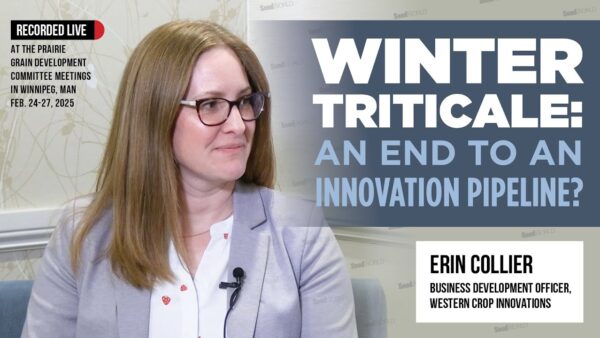Rural America is facing different changes at every level, but the biggest influencer? Technology.
From top to bottom, rural America is changing, and seed companies respond with new marketing strategies. At every level, change is being driven by technology. Precision farm technology enables farmers to collect massive amounts of data that can be used to inform production input decisions. Plant breeders are analyzing increasingly large amounts of data to better assist growers to “put the right seed in the right field.” Seed technology bundles crop protection features with genetics that are changing the boundaries of where crops can be successfully grown.
While most U.S. farming operations remain family-owned businesses, individual farms are increasingly operated as a big business, where the farmer functions as a chief executive officer and product/service providers serve as technical consultants on the farmer’s informal board of directors.
Over the past 15 years, one dramatic change is the technology used to produce agricultural crops.
“You could probably go back 30 or 40 years from the mid-2000s and corn producers were largely making the same decisions year after year,” observes Chris Haag, LG Seeds’ marketing manager. “Since then there have been so many different technological changes that have happened so rapidly that nobody coming into crop production now has the background to tell you what is right or wrong. Even someone who has been around for 40 years is now dealing with decisions so different than anything we saw before that it is difficult to take your learning from the past and apply it to today’s situation.”
A Gradual Changing the of the Guard
There is a gradual changing of the guard taking place as older farmers with 30- or 40-years experience are stepping back and are being replaced by younger, more educated and tech-savvy operators. According to the 2012 U.S. Department of Agriculture (USDA) Census of Agriculture, there were more principle farm operators in the highest three age groups (55-64 years, 65-74 years and 75+ years) in 2012 that in 2007. Both middle age groups (35-44 years and 45-54 years) gained principle farm operators.
An increasing portion of corn, soybeans and small grains are being produced on large farms with over 2,000 acres of cropland. Older farmers are stepping aside to allow younger farmers with larger farming equipment to take over farm management responsibilities. For the past three decades, the percentage of U.S. cropland in farms with 200 to 999 acres of cropland has decreased. Farms with 1,000 to 2,000 cropland acres have maintained a consistent 45% of all cropland. Large farms (more than 2,000 cropland acres) in 2012 included about 35% of all U.S. cropland, more than double the 1987 share.
“Now, there are a lot of farmers under 40 years in our Kansas and Nebraska market area,” says Adrian Polansky, owner of Polansky Seeds. “There is a bifurcation of our marketing strategies. For those farmers over age 50, our strategy is similar to what we have done in the past (radio, newspapers, etc.). The younger farmers are more focused on social media and precision ag. They may at times get their information from radio and print, but they are more focused on electronic connections. Looking ahead five years, getting younger people involved in our business will be extremely important for us to stay current. My experience in this business is that there are a lot of younger folks and millennials who are tremendous, hard working employees. They give us reason to have faith in the future.
“Facebook was the leading social media source for information but is being displaced by Instagram and others. As farms become larger, there is more likely to be more than one person in the decision-making process. You have to be where your newer customers are getting their information while still maintaining your presence in traditional media.”
When it comes to pure production knowledge, the older generation tends to be more tuned in to the production elements of producing a crop. There is a difference in each generation’s area of expertise.
“The interesting thing is that the younger generation or those coming back into farming may not have the depth in agronomic expertise the older generation has, but they have a much stronger financial and management background. They have all the skills that it takes to manage a business,” says Jeff Renk of Renk Seeds. “Our structural investment is into our technical expertise so we can function more in an advisor role.”
Renk sees that as farm size increases, farmers — especially the younger, business-oriented farmers — are bringing together an outside team with technical product and production expertise to serve as an informal board of advisers. The newer generation and larger operation managers are functioning as the CEO of their farming operation. Their larger suppliers are acting as consultants and function as a team of de facto business partners that serve as technical experts on an advisory board to the CEO. Supporting these customers requires that seed suppliers be more than a salesman with an order book.
“We are structured to bring multiple people together so they can step onto the farm and advise on the various aspects of crop production,” Renk says. “We are structurally changing customer support so we can bring a team of experts, multiple people who can walk onto the farm representing various aspects of crop production. The sales person who has developed a personal relationship with the farmer brings a technical agronomist or even a plant breeder to advise the farmers and support their purchasing decision.”
The Invasion of Big Data
“A farmer is only two decisions away from being broke,” a young farmer said recently. And most decisions these days are aided by the latest in technology.
There is not enough money in farming to allow farmers to do it wrong and have to then do it over. They need information to enable them to select the right seed for the right field the first time. Fifteen years ago, the challenge for farmers was to collect larger quantities of detailed field data. As precision agriculture technology improved, so has the amount of field data. Equipment monitors on planters, harvesters and fertilizer applicators collect real-time data and generate multiple levels of field data that can be overlayed onto maps displaying soil types, plant population and prior yield history and tillage practices.
The challenge now is to convert field data into reliable, real-time information. Not only do farmers want information when they need it, it has to be available for them to see it through the lens of their own farm.
“In the next few years as precision farming becomes more mature, as it becomes main stream, it will become an essential part of farming. It will be making an impact of how farming decisions are made,” Renk says. “In five years, precision farming will be so important that if you are not using that technology, you could be losing 10 bushels per acre. Farmers are learning that to maintain their profitability they need incorporate precision farming technology into their farming practices. Their margins are too thin for them to lose that yield advantage.”
Plant breeders have long collected data to inform their selection process. Now that data is being used to match the right hybrid to the customer’s right field. Technical agronomists are working together with plant breeders to develop new correlations to know what inputs a producer should apply throughout the growing season to get the most from each field.
“Working with these farmers is about understanding the interplay between soil types, crop history, fertility, planting populations and seed genetics. Most producers are full force into precision agriculture, but they don’t know how to get the most value out of it,” says Tim Bratland, president of Legend Seeds. “This is where education come in. They have the data, but they don’t know how to use it. We are talking about getting the data accessible to all of us so we can come out and partner with them to get the resources they need to be able to use the data they have collected and apply it to making decisions for their farm.”
The amount of data available to farmers, technical advisors and plant breeders is increasing at exponential rates. An increasingly complex challenge is to develop new correlations to translate data into useful information to enable a producer to best be able to respond to take the most advantage of each hybrid’s individual growth characteristics.
“Planning for a 400 bpa may be a goal for some producers while for others harvesting 150 bpa in another field might be a record yield. The future will always be to get the most return from every acre. A big part of that is getting the best hybrid on each acre. Bringing these two together is becoming an increasingly technical process,” Bratland says.
The Goal of Selling Seed
Considering the amount of financial risk farmers are carrying to produce a crop, the intensity and importance of farmers place on every decision is understandable. The first decision determines what genetics to plant. The next decision is how to manage that crop after planting.
The first decision a farmer makes in planning a crop is often what genetics to you plant. The next question is then how to manage that crop after planting. The old saying is when the planter leaves the field, 70% of a grain farmer’s decisions have already been made and the yield for that field is determined. There is very little a farmer can do after that to affect yield.
This is changing the role of how seed sellers serve their customers. Up to this point farmers largely made seed selections on yields and genetics. Now the hybrids lacking high performance genetics have largely fallen out of the market.
The old saying that when the planter leaves the field 70% of a grain farmer’s decisions have already been made is no less true today than it was 50 years ago. The yield for that field is determined. There is little a farmer can do after a crop is planted to significantly affect yield. Mother nature can do things, but there is very little a farmer can do. This is changing the role of the seed seller to the farmer. Up to this point farmers have been expecting high performance genetics. Anymore, getting high level genetics is a given.
“Our goal is not necessarily 400 bpa corn, but to bring the highest yielding, most agronomically sound and most consistent genetics that we can bring to our customers,” says Mike Kavanaugh, AgriGold, St. Francisville, Ill. “Through our research, our goal is to know everything we can about our genetics and to help our farmers know everything they can about the genetics they are planting. How to place and manage them. We have AgReliant Genetics’ pre-commercial research trials that overlay our commercial testing. This allows us to test elite germplasm throughout our entire territory.”
Digital techniques allow technical agronomists to analyze data and help us understand each hybrid. By itself, a dataset is just a bunch of numbers of little practical value. Interactive online platforms such as AgReliant Genetics’ proprietary Advantage Acre enables farmers to digitally map their fields and then create a seed plan based on functional soil mapping. The soil maps take into account parameters including field topography, soil types, crop history and anticipated rainfall. The platform then pairs field data with individual hybrid characteristics to make hybrid selections.
“Customers can tweak the plan, change populations and choose to plant different hybrids in a field based on both offensive and defensive criteria,” Kavanaugh says. “This is what goes into making a whole farm, field by field seed plan. We are helping each farmer take their crop to a higher level by planning for maximum yield for each farm. It all starts with knowing your genetics. Our genetics are a diverse portfolio to avoid pigeon holing customers into one particular growing environment. A diverse portfolio is a challenge for our plant breeders, but it provides new opportunities for our customers.”











